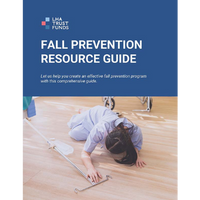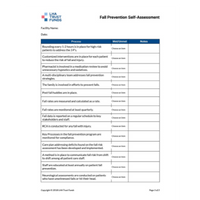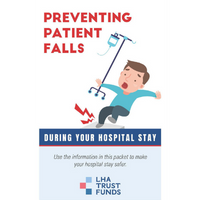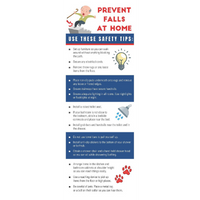Planning Fall Prevention? The Top 4 Tools To Get You Started
Fall prevention in hospitals and healthcare facilities – for both patients and employees – is a topic revisited by quality and patient safety experts over and over again.
It’s not difficult to see why.
- An estimated 1 million hospital patients fall each year, according to the Agency for Healthcare Research and Quality (AHRQ).
Slips, trips, and falls are the second highest exposure for healthcare employees according to Safety National. - What does all this mean? Slips, trips, and falls not only impact a patient or employee’s health status. It also costs your healthcare facility – in both dollars and reputation.
What does all this mean? Slips, trips, and falls not only impact a patient or employee’s health status. It also costs your healthcare facility – in both dollars and reputation.
What Makes a Good Fall Prevention Program?
Fall prevention programs can take many forms depending on the type of practice, unique risk factors of the facility, and even an individual patient’s level of risk. Typically, though, the best patient fall prevention programs are segmented into three categories: Evaluation, Prediction, and Prevention.
Evaluation
In order to provide a secure environment of care, it’s necessary to understand what is being done to promote or impede the provision of care in a safe environment. One good way to achieve this is through a risk assessment of the current fall prevention processes to determine the current state and identify opportunities for improvement. This risk assessment can be done in a few ways, but the ultimate goal is to thoroughly evaluate the hospital’s current process to identify areas where improvements can be made.
Prediction
To help prevent falls, it is essential to predict which patients are at the highest risk of falling. Once identified, nursing staff can incorporate patient fall prevention into the nursing care plan based on the level of risk. It is important to find a standardized tool for fall risk prediction so that all patients are assessed using the same standard of care. Several nationally accepted, evidence-based fall risk assessment tools have been created, such as the Morse Fall Risk Assessment and the Hendrich Fall Risk Assessment. Whichever fall prevention resource the hospital selects should meet the needs of the population served, be used consistently, and be a scoring-type of assessment (NCPS).
Prevention
There are a host of actions that can be taken to prevent falls. However, not every intervention is appropriate for every patient. A core of basic interventions should be developed for all patients and outlined in the policy. In addition, risk-level-specific interventions should also be developed. Some examples of basic interventions are patient/family education regarding fall prevention, using non-skid shoes, color-coded armbands to communicate the level of risk, locked movable equipment, and a room with clear paths to the restroom and free from fall hazards. Other specialized interventions include toileting schedules, low beds, personal alarms, and sitters.
Handpicked For You
Our LHA Trust Funds risk management consultants have rounded up some of the best tools to help guide your facility’s fall prevention program.
Whether you are a large healthcare provider or a small physician office practice, these fall prevention resources can help you evaluate the current risks in your environment, guide staff training, and even educate your patients about preventing falls at home.

Fall Prevention Guide with Checklist
This resource presents an overview for the development of an effective employee and patient fall prevention program in hospitals, including a policy development template that addresses the components of a fall prevention policy.

Fall Prevention Self-Assessment
This fall prevention self-assessment tool allows you to evaluate your organization’s current practices against best practices for preventing falls. It is designed to help you assess the overall program, from unit-level interventions to overall data collection.

Patient Education Brochure
Use our brochure to educate your patients and their family members on fall prevention in hospital settings.

Patient Education Rack Card
Include our rack card at discharge to ensure they are prepared to go home.
Who Benefits from Fall Prevention Programs?
- Patients: The core of a strong fall prevention program is the dedication to patient safety. When hospitals and healthcare facilities standardize fall prevention practices, they reduce the risk of additional patient injury and trauma.
- Employees: Fall prevention programs can also apply to employees. Incorporating employee safety procedures can reduce employees' risk of workplace accidents.
Healthcare Facilities: A standardized, well-documented employee and patient fall prevention program can protect healthcare facilities from legal action due to falls. In addition, a healthcare organization's reputation hinges on patient safety and experience. Having these programs in place can increase satisfaction and safety for employees and patients alike.
Need More Resources?
Click here to view our complete Fall Prevention toolkit. Our comprehensive toolkit stocks all the necessary resources to create an effective employee and patient fall prevention program.
Our quality and patient safety consultants are also happy to help. Contact the LHA Trust Funds team to get started.